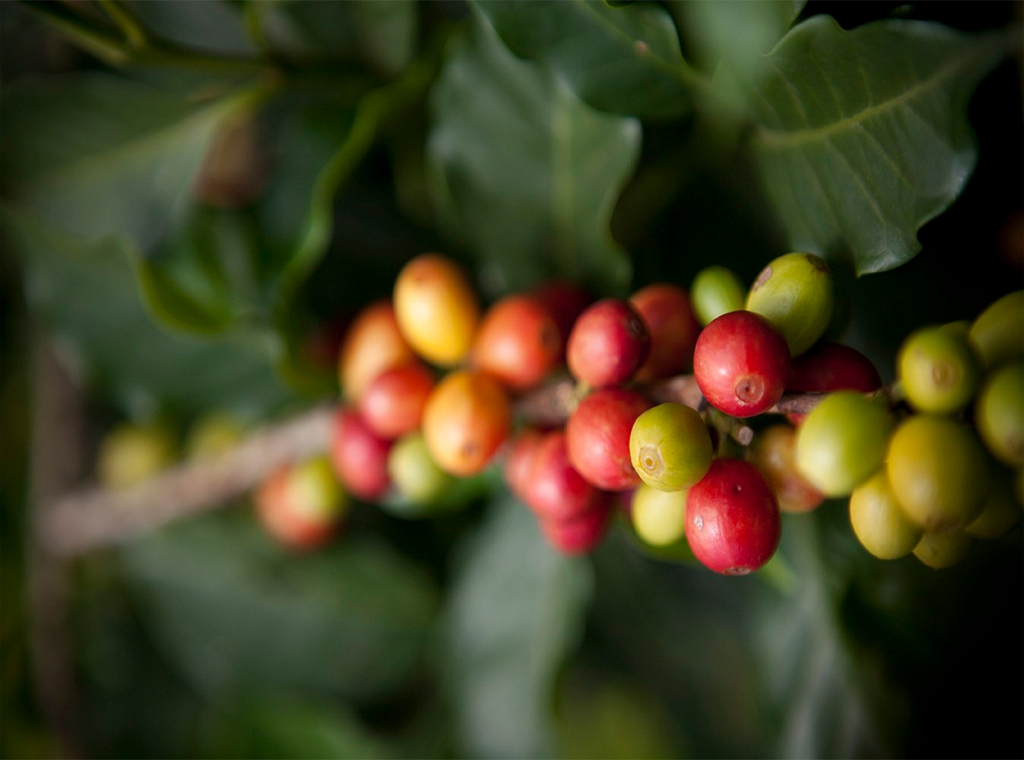
Introducing Anaerobic Fermentation
Huatusco Mexico Microlot, a Limited Release, subscriber-exclusive coffee, is an extra special occasion for Peet’s, being both our first single origin Mexican coffee in many years and our first ever that has undergone anaerobic processing. This special microlot is sourced from the municipality of Huatusco in the state of Veracruz, where there are mountain ranges that provide higher altitudes and ideal climatic conditions for coffee cultivation. We’ve really been enjoying the profiles of coffee coming out of Mexico and are excited to showcase this fantastic origin. But what do we mean by anaerobic fermentation?
Fermentation? In coffee? Yes!
Believe it or not, almost all coffee undergoes fermentation as part of its processing. For coffee, “processing” simply refers to the removal of the seed from the fruit of the coffee tree—the coffee cherry—and its transformation into something ready for roasting. Fermentation is a natural phenomenon that we humans have harnessed to preserve and transform our foods. Wine, beer, kombucha, soy sauce, vinegar, cheese, kimchi, and more all rely on fermentation for their flavor and benefits, but it’s not as widely known that coffee (and even tea and chocolate!) also undergoes fermentation.
After being removed from the cherry during pulping, or while resting in the cherry during drying (as in natural processing), microbes help to break down the mucilage, the inner fruit layer that clings to the seeds that eventually become our coffee beans.

While it is possible to mechanically remove mucilage with specialized machines, traditionally this is achieved with the ancient process of fermentation. We rely on naturally occurring microorganisms, wild yeasts and bacteria present in the environment, to break down this thin film of fruit surrounding the seeds, converting it into different enzymes, acids, and alcohols. This does more than just get the seeds clean–-it alters the flavor of the coffee too!
Every origin has not only its own climate and terroir that impacts coffee flavors, but also a unique microbial community. These different yeasts and bacteria involved in fermentation impart flavor characteristics distinctive to where the coffee is grown and processed. This is one reason why the same plant grown all over the world tastes so different depending on where it’s from.
So, if all coffee undergoes fermentation, what’s so special about this anaerobic style of processing coffee?
In coffee processing, fermentation is just one piece of the puzzle. But as we’ve begun to understand more about how microbes influence everything from how plants grow to how our gut interacts with our brains, people have started taking a closer look at how the fermentation step in coffee determines what we taste in our morning brew.
Most coffee processing involves what’s known as “aerobic fermentation.” This type of fermentation takes around 16 to 20 hours and happens out in the open, in the presence of oxygen, which affects and contributes to the growth of the microbial community. Aerobic fermentation can be difficult to control because there are so many variables involved, like temperature and humidity. Less control leads to possible defects and unpredictable flavors.
“Anaerobic fermentation” on the other hand, takes the guesswork out of this part of the process. Rather than being exposed to air, the pulped coffee is placed in stainless steel tanks that use carbon dioxide to push out oxygen. This oxygen-free environment allows for a slower, more controlled fermentation which gives the ability to tweak the variables that were previously left to nature. It also lowers the risk of developing defects in the coffee, something we screen for very carefully here in the Peet's Cupping Room. Reducing the chance that a coffee will have defects or an unfavorable profile improves the chances that it will be purchased by a roaster who values immaculate processing–like Peet’s!
This method is attempting to control the natural reactions that take place during fermentation in order to influence the flavor profile of a coffee. It’s this sort of exciting experimentation that leads to further understanding of coffee and expansion of its potential.
So how does anaerobic coffee processing affect flavor?
Coffee experts are still learning about how and why anaerobic fermentation alters profiles, but what our taste buds are telling us is that it leads to brighter, more complex flavors. Nothing is lost when it comes to body, sweetness, or character, but they’re all amplified.
In the Huatusco Microlot, we’re tasting tart green apple and juicy white grape electrified by the anaerobic fermentation. A silky texture and a subtle baking spice note round out the finish on this tantalizing cup.
We couldn’t be more delighted to offer this exciting origin in tandem with an innovative processing technique. Please enjoy and remember to thank those microbes!
A note on terminology
Anaerobic fermentation is a tricky term. Scientifically speaking, it’s redundant, because all fermentation happens anaerobically, without the presence of oxygen. Even when coffee is fermented “aerobically” outside of a specialized tank, the microbial processes are still happening within the mucilage layer where there is no oxygen. But in the coffee industry, the terms are used to differentiate between more traditional methods and this newer style using anoxic tanks. The real difference in taste doesn’t come down to equipment so much as to which microbes are allowed to proliferate within the fermentation environment. By changing the environment, we change which microbes flourish and which ones are inhibited, contributing to flavor differences. Using a redundant, non-scientific term is divisive within the coffee community, but currently this is the most appropriate way to describe this coffee.
-Author and Illustrator Alysse Wishart is Peet's Cupping Lab Coordinator, Coffee Department


